#trent clements
Explore tagged Tumblr posts
Text
TRENT CLEMENTS from MY PARENTS ARE ALIENS

JUSTIFICATION:
"Just look at her and know this implicitly" - Anonymous
Reminder: Submissions are always open! Submit here!
Did you make your daily click today?
#could transition have saved her#trent clements#my parents are aliens#transgender#trans hc#anonymous submission
15 notes
·
View notes
Text



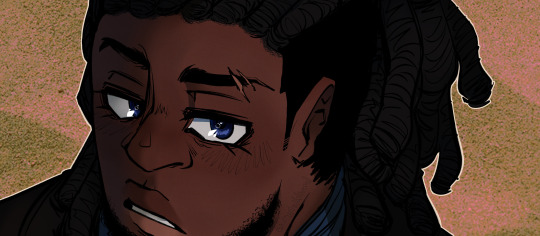





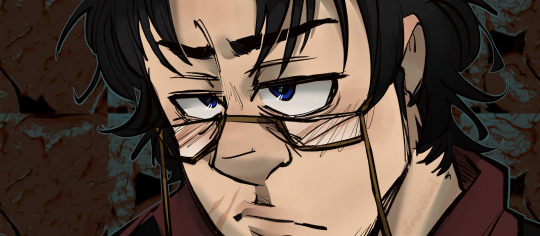






Cosmic Vanquish- Close Up 👁️👁️📸
#might make a part 2 with the other characters idk! ;]#cosmic vanquish#idk how to tag the creepy shit so bear with me#blood#please don't steal or reclaim my art#my characters#my artwork#my ocs#uncanny valley#body horror#scopophobia#eye contact#crypta barnaby#hector barnaby#corvus barnaby#esmeralda trent#gomez brooks#reuben vanderson#oscar mccoy#kioshi ryuji#jade bloom#lavarus leopold#dimitri grim#the lurk#aria bost#edna bost#luther reece#clemente dawn#original characters#character art
22 notes
·
View notes
Text
St. Joseph is traditionally viewed as a saint of the Counter Reformation [...] However, as is seldom pointed out, the acts of the Council of Trent (1545-63) are in fact silent on the cult of St. Joseph, and his name disappears from the Roman breviary after the reforms of Pope Pius V (1568-70). Renewed papal interest in St. Joseph's cult is directly apparent, on the other hand, by the late 1590s under Clement VIII, and the next public milestone is the year 1621, when Gregory XV ordered that the feast of St. Joseph be observed as a holy day of obligation throughout the Universal Church.
- Carolyn C. Wilson (St. Joseph in Italian Renaissance Society and Art: New Directions and Interpretations, pages 1, 8)

#Christianity#Catholicism#Saint Joseph#Protestant Reformation#Council of Trent#liturgy#history#Pope Clement VIII#Pope Gregory XV#Pope Pius V#saints#Ecclesia#Virgin Mary#Jesus Christ#Sweet Baby Jesus#Holy Family#Terrestrial Trinity#angels
5 notes
·
View notes
Text










YELLOW AS...
ash dayna | beth trent | daze higgins | lucien o'malley | pennyshore robertson | perry hart | sawyer linklater | seraphina poriosolo | willa hancock | yasha clement
"while yellow is often associated with joy, it is often metaphorically associated with negative meaning in different expressions, such as being linked to cowardice or fear." "the color has traditionally been a symbol of joyfulness, happiness, and energy and is associated with summer months. While on the other hand, it also symbolized caution and cowardice and irritates people in certain shades."
#📖— the lore keeper#a. dayna#b. trent#d. higgins#l. o'malley#p. robertson#p. hart#s. linklater#s. poriosolo#w. hancock#y. clement
1 note
·
View note
Text
musings
#dusty w.#fox n.#oceania l.#delilah c.#alara k.#trent h.#elia a.#trista y.#emil z.#blythe n.#clement e.#aj m.#tiler w.#hadley b.#price h.#estelle k.#tennessee a.#sienna u.#deonie r.#timer w.
0 notes
Text


“ And the name of the virgin was Mary. " (St. Luke 1:27)
In this simple phrase, St. Luke sums up the greatness of Mary, as epitomized in her holy name. The name of Mary was chosen by the Almighty God for the masterpiece of His creation, the Mother of His Divine Son, and was revealed to Sts. Anne and Joachim, Mary's parents by the Angel Gabriel.
The feast in Honor of Holy Name of the Blessed Virgin Mary originated in Spain and was approved by the Holy See in 1513. Pope Innocent XI extended its observance to the whole Church in 1683 in thanksgiving to our Lady for the victory on September 12, 1683, by John Sobieski, king of Poland, over the Turks, who besieged Vienna.
The Council of Ephesus in 431 taught that the Blessed Virgin Mary was properly called the "Mother of God" or "God-Bearer" (Theotokos). By the sixth century, the angelic greeting in Luke 1:28 was commonly used as a prayer, "Hail, Mary, full of grace, the Lord is with you!" By the fourteenth century, the second part of the Hail Mary prayer was often used in conjunction, "Holy Mary, Mother of God, pray for us sinners, now and at the hour of our death." In the sixteenth century, the Council of Trent, in its catechism, formally recommended this entire prayer, as we have it today, to the faithful.
St. Louis de Montfort said, "The whole world is filled with her glory, and this is especially true of Christian peoples, who have chosen her as guardian and protectress of kingdoms, provinces, dioceses, and towns. Many cathedrals are consecrated to God in her name. There is no church without an altar dedicated to her, no country or region without at least one of her miraculous images where all kinds of afflictions are cured and all sorts of benefits received. Many are the confraternities and associations honoring her as patron; many are the orders under her name and protection; many are the members of sodalities and religious of all congregations who voice her praises and make known her compassion. There is not a child who does not praise her by lisping a 'Hail Mary.' There is scarcely a sinner, however, hardened, who does not possess some spark of confidence in her. The very devils in hell, while fearing her, show her respect."
Prayer in Honor of the Name of Mary by St. Alphonsus de Ligouri
O great Mother of God and my Mother Mary, it is true that I am unworthy to name thee; but thou, who lovest me and desirest my salvation, must, notwithstanding the impurity of my tongue, grant that I may always invoke thy most holy and powerful name in my aid, for thy name is the succor of the living, and the salvation of the dying. Ah, most pure Mary, most sweet Mary, grant that henceforth thy name may be the breath of my life. O Lady, delay not to help me when I invoke thee, for in all the temptations which assail me, and in all my wants, I will never cease calling upon thee, and repeating again and again, Mary, Mary. Thus it is that I hope to act during my life, and more particularly at death, that after that last struggle, I may eternally praise thy beloved name in heaven, O clement, O pious, O sweet Virgin Mary. Amen.
#catholic faith#catholic#catholic life#catholic church#catholic tradition#mother mary#our lady#family prayer#catholic saints
6 notes
·
View notes
Text
THIS DAY IN GAY HISTORY
based on: The White Crane Institute's 'Gay Wisdom', Gay Birthdays, Gay For Today, Famous GLBT, glbt-Gay Encylopedia, Today in Gay History, Wikipedia, and more … November 3


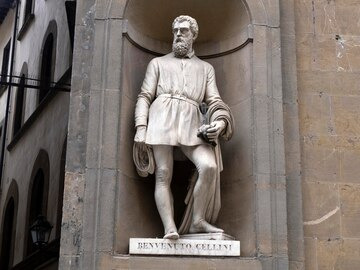
1500 – Benvenuto Cellini (d.1571), sculptor, goldsmith, memoirist, and flamboyant pederast, is one of the greatest artists in the history of Western art. He was the last of the great Renaissance artists, for the free exploration and celebration of the sensual (particularly the homoeroticism) that inspired his genius and was a hallmark of Renaissance Florentine culture were soon aborted.
Benvenuto Cellini was born in Florence at the peak of the Italian Renaissance. Apprenticed to a goldsmith, he excelled in that art. In fact, he was so successful that he was called upon to fulfill major commissions throughout Italy and France. Indeed, he traveled so much that until he was forty-five years old, he never lived longer than five years in any one place. The reasons for his sometimes abrupt departures ranged from political upheavals and plague to outbursts of temperament, including murder.
At nineteen, Cellini went to Rome, where over the years he worked for Popes Clement VII and Paul III. In 1536, he traveled to France, where he sculpted decorations for the palace at Fontainebleau. In 1545, Cellini returned to Florence, where he lived the rest of his life.
Florence was notorious in the Renaissance as "Sodom City": in German slang, "Florenzer" meant "sodomite." In the late fifteenth century, one in two Florentine men had come to the attention of the authorities on suspicion of sodomy by the time they were thirty. In 1432, the "Office of the Night" was created to eliminate sodomy, but after seventy years it was disbanded as the task was deemed hopeless. About ninety percent of the cases reported involved boys under the age of eighteen. Sexual activity between men and boys was an integral feature of Florentine culture in the sixteenth century.
Cellini himself was convicted of homosexual sodomy with a boy named Domenico in Florence in 1523 and fined 12 bags of flour. He was prosecuted but absolved of charges of heterosexual sodomy in France. In Florence, Cellini was supported by his appreciative patron Duke Cosimo I de'Medici. Cosimo's first commission was for a large bronze Perseus holding Medusa's severed head. This magnificent nude figure in the Piazza della Signoria is a gay icon for its depiction of a beautiful young man.
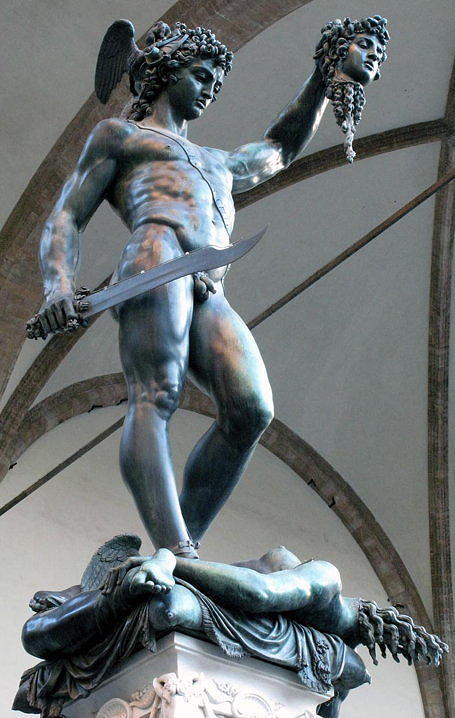
Perseus
Cellini's subsequent works, including the marble statues of Ganymede and the Eagle, Narcissus, and Apollo and Hyacinth are particularly appealing to men who love boys. In Ganymede and the Eagle, the young Trojan boy lovingly ruffles the neck feathers of his seducer, while in Apollo and Hyacinth, the mature Apollo ruffles the tousled curls of an expectantly receptive Hyacinth, on his knees at the god's feet.
The homoerotic spirit that nourished Cellini's art was soon to be crushed in Florence. In response to the Protestant Reformation, the Roman Catholic Church at the Council of Trent (1545-1563) adopted policies designed to make the Church even more austere than the Protestants. It also embarked on a campaign to crush heresy. It established the Index of Prohibited Books and it proscribed carnality in art. In 1559, Pope Paul IV ordered draperies painted on the nudes in Michelangelo's Last Judgment. The Council's decrees were enthusiastically enforced through the sadistic power of the Inquisition.
In this context, in 1557, when his apprentice Fernando di Giovanni di Montepulciano accused Cellini of having sodomised him many times, the penalty was a hefty fifty golden scudi fine, and four years of prison, remitted to four years of house arrest thanks to the intercession of Duke Cosimo.
During his years of house arrest, Cellini attempted to rehabilitate his reputation. Not only did he devote himself to religious art (including a deeply religious marble crucifix), but he also took minor holy orders and fathered a son in 1560 by his servant Piera, whom he married in 1563.
Most importantly, however, during his period of house arrest, Cellini began his celebrated Vita. In this autobiography, the artist recounts his acquaintanceships with princes and popes and his great achievements as sculptor and goldsmith, while disavowing, with wounded innocence, his reputation as a pederast. He implies that he is a ladies' man, but cannot resist bragging that once he took his apprentice Diego in drag to a party of artists and their whores. The boy was voted the most beautiful prostitute in Florence, which nearly caused a riot when one of the girls groped Diego and discovered the truth of his sex.
Although the Vita attempts to present an appearance of orthodox morality and fails to mention Cellini's gay affairs or his convictions for sodomy, it nevertheless repays interest for its homosexual content. Especially significant in this context is Chapter 71 of Book Two, which may be read as a defense of sodomy, that "noble practice" indulged in by "the greatest emperors and the greatest kings of the world." Cellini says that he lacks the knowledge or means to meddle in the "noble practice," but he nevertheless commends it as "a marvelous matter." Whether these passages can be taken seriously or in jest is a matter of debate; certainly the context in which he was writing—under house arrest for having had sex with a young man—is an important consideration in interpreting the autobiography.

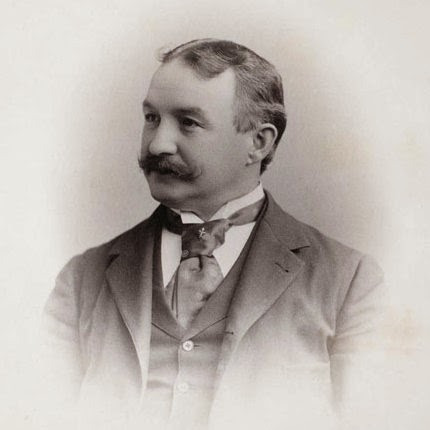
1846 – (Francis Davis) Frank Millet was an American painter, sculptor, and writer who died in the sinking of the RMS Titanic on April 15, 1912.
Francis Davis Millet was born in Mattapoisett, Massachusetts. At age sixteen, Millet entered the Massachusetts regiment, first as a drummer boy and then a surgical assistant (helping his father, a surgeon) in the American Civil War. He repeatedly pointed to his experience working for his father as giving him an appreciation for the vivid blood red that he repeatedly used in his early paintings. He graduated from Harvard with a Master of Arts degree. He worked as a reporter and editor for the Boston Courier and then as a correspondent for the Advertiser at the Philadelphia Centennial Exposition.
Millet had a studio in Rome in the early 1870s, and Venice in the mid-1870s, where he lived with Charles Warren Stoddard, a well-known American travel journalist who, evidence indicates, had an active sexual interest in men. Historian Jonathan Ned Katz presents letters from Millet to Stoddard that suggest they had a romantic and intimate affair while living a bohemian life together.
A well-regarded American Academic Classicist, Millet was close friends with Augustus Saint-Gaudens and Mark Twain, both of whom were present at his 1879 marriage to Elizabeth Merrill in Paris, France; Twain was his best man. He was also well acquainted with the impressionist artist John Singer Sargent, who often used Millet's daughter Kate as a model, as well as the esteemed Huxley family.
Millet became a member of the Society of American Artists in 1880, and in 1885 was elected as a member of the National Academy of Design, New York and as Vice-Chairman of the Fine Arts Committee. He was made a trustee of the Metropolitan Museum of Art, and sat on the advisory committee of the National Gallery of Art. He was decorations director for the World's Columbian Exposition in Chicago in 1893, where he is credited with having invented the first form of spray paint. His career included work with a number of worlds' fairs, including Vienna, Chicago, Paris, and Tokyo, where he made contributions as a juror, administrator, mural painter/decorator, or adviser.
Millet lived with Archibald Butt, who called him "my artist friend who lives with me", in a large mansion at 2000 G Street NW. They were known for throwing spartan but large parties that were attended by members of Congress, justices of the Supreme Court, and President Taft himself. There is some speculation that Butt and Millet were lovers.
Historian Richard Davenport-Hines wrote in 2012: "The enduring partnership of Butt and Millet was an early case of "Don't ask, don't tell". Washington insiders tried not to focus to closely on the men's relationship, but they recognized their mutual affection, and they were together in death as in life."
On April 10, 1912, Millet boarded the RMS Titanic at Cherbourg, France, bound for New York City. He was traveling with long-time friend Archibald Butt. He was last seen helping women and children into lifeboats. His body was recovered after the sinking by the cable boat Mackay-Bennett and returned to East Bridgewater, Massachusetts, where he was buried in Central Cemetery.
In 1913, the Butt-Millet Memorial Fountain was erected in Washington, D.C., in memory of Millet and his long-time friend and lover Archibald Butt, with whom he shared a home, and who also died on the Titanic.

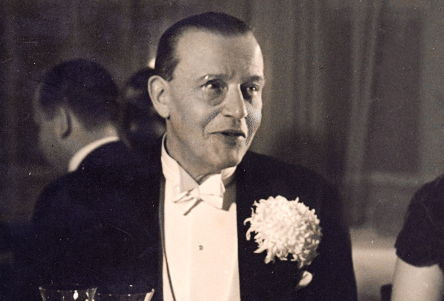
1871 – Hanns Heinz Ewers (d.1943) was a German writer famous for his short stories and novels that expanded the parameters of the horror genre. He began his literary career as a poet when he published "A Book of Fables", satirical verses, in 1901. In addition to writing, he was an actor and created a vaudeville theater the same year he made his literary debut. He also founded another acting company that toured Central and Eastern Europe, but he abandoned the theater due to censorship.
It was his stories about the occult and horror that made his name. His first novel "The Sorcerer's Apprentice" was published in 1910 and his masterpiece, "Alarune", in 1911. The two novels were part of a trilogy based on the autobiographical character of Frank Braun, who also appears in the 1921 novel "Vampyr".
Ewers was deeply attracted to the philosophy of Friedrich Nietzsche, and the Nietzschean philosophy of the "intellectuals" of the Nationalsozialistische Deutsche Arbeiterpartei, as well as their nationalism (to say nothing of their mysticism) attracted him to the Nazi Party, though he never joined it. He did not agree with the party's anti-Semitism and this plus his homosexual tendencies soon ended his popularity with the party management.Though he wrote a novel based on the life of Nazi martyr Horst Wessel, allegedly at the bequest of Adolf Hitler, his works were banned by the Nazis in 1934.
A penniless Hanns Heinz Ewers died from tuberculosis on June 12, 1943 in Berlin. He was 72 years old.

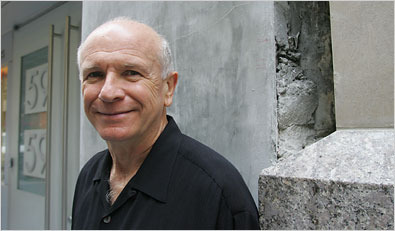
1939 – Terrence McNally (d.2020) was an American playwright who has received four Tony Awards, an Emmy, two Guggenheim Fellowships, a Rockefeller Grant, the Lucille Lortel Award, the Hull-Warriner Award, and a citation from the American Academy of Arts and Letters.
After graduation, McNally moved to Mexico to focus on his writing, completing a one-act play which he submitted to the Actors Studio in New York for production. While the play was turned down by the acting school, the Studio was impressed with the script, and McNally was invited to serve as the Studio's stage manager so that he could gain practical knowledge of theater. In his early years in New York, he was a protégé and lover of the noted playwright Edward Albee.
Although several early comedies such as Next in 1969 and 1975's The Ritz, set in a gay bathhouse, won McNally critical praise, it was not until later in his career that he would become truly successful with works such as his Off-Broadway play Frankie and Johnny in the Clair de Lune and its screen adaptation with stars Al Pacino and Michelle Pfeiffer.
In 1990, McNally won an Emmy Award for Best Writing in a Miniseries or Special for Andre's Mother, a drama about a woman trying to cope with her son's death from AIDS. A year later, he returned to the stage with another AIDS-related play, Lips Together, Teeth Apart, a study of the irrational fears many people harbor towards homosexuals and people who have AIDS.
With Kiss of the Spider Woman (based on the novel by Manuel Puig) in 1992, McNally returned to the musical stage, collaborating on a script which explores the complex relationship between two men caged together in a Latin American prison.

Another of McNally's other plays is 1994's Love! Valour! Compassion!, with Lane and John Glover, which examines the relationships of eight gay men; it, too, was made into a popular movie.
In 1997, McNally stirred up a storm of controversy with Corpus Christi, a modern day retelling of the story of Jesus' birth, ministry, and death in which both he and his disciples are portrayed as homosexual. In fact, the play was initially canceled because of death threats from extremist religious groups against the board members of the Manhattan Theatre Club which was to produce the play. However, several other playwrights such as Tony Kushner threatened to withdraw their plays if Corpus Christi was not produced, and the board finally relented. When the play opened, the theatre was besieged by almost 2,000 protesters, furious at what they considered blasphemy.
On January 19, 2008, Robert Forsyth, Anglican bishop of South Sydney condemned Corpus Christi for depicting Judas seducing Jesus: "It is deliberately, not innocently, offensive and they're obviously having a laugh about it." The play also showed Jesus administrating a marriage between two male apostles.
In a January 2003 interview, McNally addressed critics who said he had "added" two gay characters to his Broadway adaptation of the film The Full Monty: "If Neil Simon had written the script, they wouldn't have said that. I get it for being gay, for proselytising. It's so annoying, all that bullshit."
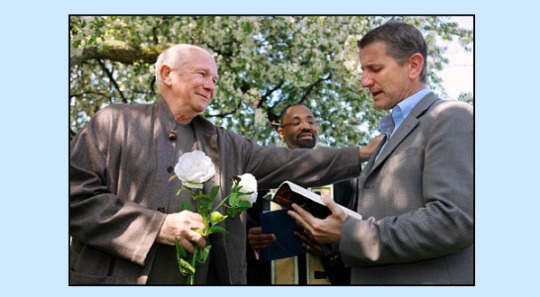
McNally was partnered to Thomas Kirdahy following a civil union ceremony in Vermont in 2003, and they subsequently married in Washington, D.C. on April 6, 2010. McNally was one of the first victims of COVID-19 and died from complications on March 24 2020.

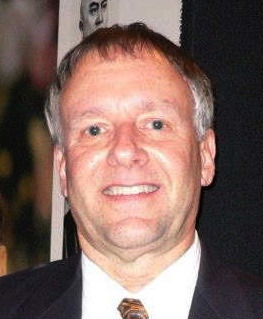
1948 – Walter Lee Williams is a former professor of anthropology, history, and gender studies at the University of Southern California. He is one of the pioneers in the field of Queer studies, with a long background in human rights activism. In 2013, after his retirement, he was arrested and imprisoned for five years on the charge of "illicit conduct in foreign places."
As a teenager in Atlanta in the 1960s, Williams was inspired by Martin Luther King to get involved in the civil rights movement. In 1978 he became a gay rights activist, protesting against Anita Bryant’s Save Our Children campaign.
Williams earned an undergraduate degree in History and Anthropology from Georgia State University in 1970, and continued to the University of North Carolina at Chapel Hill where he earned a Master's in History in 1972, and a Ph.D. in History and Anthropology, in 1974. His doctoral thesis was Black American Attitudes Toward Africa: The Missionary Movement, 1877—1900, and would form the basis of his first book.
In 1979, while Williams was an assistant professor at the University of Cincinnati, he and Gregory Sprague founded the Committee on Lesbian and Gay History, an affiliate of the American Historical Association.
In his fourth book, The Spirit and the Flesh: Sexual Diversity in American Indian Culture, in 1986, Williams came out as gay. This book was the first complete study of the berdache, androgynous and gender-variant people among the American Indians. The book won the 1987 Gay Book of the Year Award from the American Library Association, the 1986 Ruth Benedict Award from the Society of Lesbian and Gay Anthropologists, and the Award for Outstanding Scholarship from the American Foundation for Gender and Genital Medicine and Science presented at the 1987 World Congress for Sexology.
He has published ten books and taught American Indian Studies. He has also been recognized for his work with the gay and lesbian community. An ethnographer, Williams has also traveled throughout North America from Alaska to Yucatan to study Native American tribes. His other areas of expertise include cultures of Southeast Asia and the South Pacific, based on his years of field research in Indonesia, Thailand, Malaysia, Cambodia, the Philippines and Polynesia.
In 1994-1995, Williams, with Jim Kepner, oversaw the merger of the International Gay and Lesbian Archives and the ONE, Inc. library holdings to form the ONE National Gay & Lesbian Archives at USC, the largest repository of LGBT materials in the world.
On March 24, 2006, Williams was awarded the Gandhi, King, Ikeda Award from Morehouse College, for his work during the civil rights and peace movements and in support of LGBT rights.
Williams taught anthropology, gender studies and history at the University of Southern California until his retirement in 2011. He lived in Mexico on a retirement visa from 2011 to 2013, where he continued his earlier research among the Mayan Indians.
On April 30, 2013, a federal arrest warrant was issued for Williams in the United States District Court for the Central District of California for sexual exploitation of children, travel with intent to engage in illicit sexual conduct, and engaging in illicit sexual conduct in foreign places. Williams was accused of engaging in sexual acts with teenage boys in the Philippines via webcam.
On June 17, 2013, he was placed on the FBI Ten Most Wanted Fugitives list. He was arrested in Mexico one day after he was put on the FBI Ten Most Wanted Fugitives list and was extradited to Los Angeles, California. The FBI, with reasonable suspicion, searched Williams's computer, finding unclothed photographs of teenage boys. In 2014, he pleaded guilty to illicit sexual contact with boys aged 14 to 16 in the Philippines and was sentenced to five years in prison.

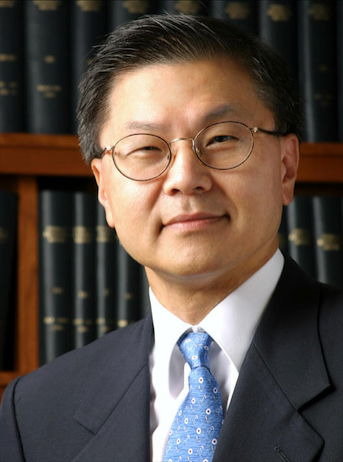
1952 – David Ho, HIV-AIDS researcher, was born on this date; a Taiwan-born American AIDS researcher famous for pioneering the use of protease inhibitors in treating HIV-infected patients with his team. Ho devised the method of treating HIV with "cocktails". He theorized that combining the powerful protease inhibitor drugs with other HIV medications would provide a more effective way to treat the disease.
Ho is married to artist Susan Kuo, with whom he has three children. Many of us owe our lives to his work.


1959 – Timothy Patrick Murphy (d.1988) was an American actor, perhaps best known for his role as "Mickey Trotter" on the popular CBS prime time soap opera Dallas during the 1982-83 season.
Murphy started his acting career as an adolescent in several television commercials and from there he went on to act in the 1978 miniseries Centennial. Other than his role in Dallas, he spent more than a year playing a young con-man on the CBS daytime soap drama Search for Tomorrow, and also had a regular role on the short-lived 1984 ABC prime-time drama Glitter. In addition to this, he appeared in episodes of Hotel, The Love Boat and Hunter.
He appeared in the 1981 film Bushido Blade. One of Murphy's most substantial roles was in the 1984 feature film Sam's Son, the film biography of the life of actor Michael Landon, in which he played the character of Gene Orowitz (the young Landon).
Murphy contracted HIV and died of AIDS on December 6, 1988 in California, aged 29. He once stated that he'd had an affair with the allegedly bisexual actor Brad Davis, who had AIDS and committed assisted suicide in 1991


4 notes
·
View notes
Text
9 TV Shows, 9 Characters
Thank you @st-clements-steps for the tag!
Miss Fisher's Murder Mysteries - Phryne Fisher
Ted Lasso - Trent Crimm
Good Omens - Crowley
Doctor Who - The Tenth Doctor
Daredevil - Karen Page
The English - Eli Whipp (honestly Cornelia is also up there they are both Everything this was a hard choice)
The Umbrella Academy - Ben Hargreeves
Reservation Dogs - Willie Jack
Game of Thrones - Margaery Tyrell
12 notes
·
View notes
Text
SAINT OF THE DAY (November 4)

No age of the Catholic Church's history is without its share of confusion and corruption.
Still, even in moments when disorder may seem overwhelming, individuals and movements eventually arise to propose the faith with clarity and demonstrate it in action.
St. Charles Borromeo, a central figure in the Council of Trent, is remembered on November 4 as a model of such leadership in difficult times.
The circumstances of Charles' birth on 2 October 1538 could have easily allowed him to join the ranks of corrupt Renaissance-era clergy.
He was born into luxury, the son of noble parents, with a guaranteed income comparable to modern “trust funds.”
The Borromeo family was one of the most ancient and wealthy families in Lombardy, made famous by several notable men, both in the church and state.
His father Gilbert was Count of Arona. His mother Margaret was a member of the Milan branch of the House of Medici.
Early on, however, the young man signaled his intention to go against the cultural grain.
He announced his desire to serve the Church with sincerity, asking his father to give away the majority of the fund's money to the poor.
Charles could not escape a certain degree of wealth and prestige, which were expected due to his social class, but he insisted on using these forms of leverage to benefit the Church, rather than himself.
When he was 22, his opportunity came: the young lawyer and canonist's uncle was elected as Pope Pius IV.
Charles soon assumed staggering responsibilities, serving as a papal diplomat and supervisor of major religious orders.
The young man relaxed from these tasks through literature and music, taking no interest in the temptations abounding in Rome during the late Renaissance.
He considered renouncing even this temperate lifestyle for the strict observance of a monastery — but found himself more urgently needed in the work of concluding the Council of Trent.
The Church's nineteenth Ecumenical Council had begun in late 1545 but experienced many delays.
Its twofold mission was to clarify Catholic doctrine against Protestant objections and reform the Church internally against many longstanding problems.
As a papal representative, Charles participated in the council's conclusion in 1563, when he was only 25.
He also played a leading role in assembling its comprehensive summary, the Roman Catechism or 'Catechism of the Council of Trent.'
In reward for his labors, Charles received even greater responsibilities. Ordained a priest during the Council, he was named as archbishop and cardinal only months later.
He found his diocese of Milan in a state of disintegration, after two generations of virtually no local administration or leadership.
The new bishop got straight to work establishing schools, seminaries, and centers for religious life.
His reforms of the diocese, in accordance with the decrees of the council, were dramatic and effective, so much so that a group of disgruntled monks attempted to kill him. His survival was called miraculous.
The new archbishop's efforts for catechesis and the instruction of youth were especially fruitful, initiating the work of the Confraternity for Christian Doctrine and the first “Sunday School” classes.
He also gave important pastoral attention to English Catholics who fled to Italy to escape new laws against the Catholic faith.
St. Charles Borromeo's amazing diligence, frequent travel and ascetic living eventually took their toll.
The once young prodigy of the Papal Court also died young at the age of 46 on 3 November 1584.
He was beatified by Clement VIII on 12 May 1602. He was canonized by Paul V 26 years later, on 1 November 1610.
He is the patron of bishops, cardinals, seminarians, spiritual leaders, catechists, and catechumens.
#Saint of the Day#St. Charles Borromeo#Council of Trent#Roman Catechism#Catechism of the Council of Trent
2 notes
·
View notes
Text








42 St-Etienne le quartier de Montchovet avec de nouvelles video https://www.facebook.com/watch/?v=5656029074475535 , jadis cette cité moderne avait pour symbole la Muraille de Chine mastodonte de béton dynamitée le 27 mai 2000 , livrée en avril 1964 avec 526 logements HLM sur 15 allées, construite sur 4 blocs pour 270 metres de long du R+16 à R+9 une cité moderne a 1260 lgts HLM 7 barres A B C D E F G H du grand ensemble de Beaulieu l'1 des six 1er de France @ des Architectes MM GOUYON , HUR , CLEMENT , MAUHAUDIER Elle fut réhabilitée par Raymond Martin de 1985 a 1987 avec la suppression de 100 logements.. France : 800'000 chômeurs de 20 ans @ 42 st Etienne 23 avril 1981 Monchovet la Muraille de Chine en video ici sur ce lien https://www.rts.ch/.../13937390-france-800000-chomeurs-de... En pleine crise économique du début des années 1980, la France compte 1'700'000 chômeurs dont 800'000 jeunes. Trente-six ans après sa construction, la barre s'apprête à s'écrouler. Dès 8 heures du matin, le 27 mai 2000, deux cents membres des forces de l'ordre sont mobilisés aux abords de la Muraille de Chine. "Rocade fermée, quartier bouclé, filtrage serré", décrit le journaliste de France 3 Rhône-Alpes-Auvergne sur place. "Seuls les artificiers resteront au centre du dispositif pour établir le poste de tir". Plusieurs milliers de personnes se retrouvent massées sur une colline pour assister à cette démolition un véritable "événement pour la ville au delà-même du quartier". Ce Stéphanois, alors âgé de 20 ans, se rend avec des amis pour voir le foudroyage de la Muraille de Chine. "Elle représentait cet habitat des Trente glorieuses qui n'a pas fonctionné. C'est vraiment une énorme page qui se tournait pour la ville de Saint-Etienne trop connue pour ses nombreuses verrues". Alors que le maire de Clermont-Ferrand, Olivier Bianchi, a annoncé la destruction de la Muraille de Chine bâtie en 1961 dans le quartier Saint-Jacques, retour sur la démolition de ce qui fut la plus grande barre d'Europe. Le 27 mai 2000, Saint-Etienne foudroyait sa muraille de Chine. Un symbole de modernité dans les années 60 Situé au sud-est de la ville de Saint-Etienne, le quartier de Montchovet a abrité pendant trente-six ans le plus grand bâtiment d'habitation d'Europe. Surnommé la Muraille de Chine en raison de son gigantisme, il symbolise toute une époque et son histoire est indissociable de la politique du logement en France. Avec ses 275 mètres de long, ses 48 mètres de haut, ses dix-neuf étages et ses 450 logements,526 a l origine, la Muraille, inaugurée en avril 1964, abrite des appartements dotés de tout le confort moderne dans un quartier en pleine évolution. Le bâtiment imposant symbolise à l'époque une forme de modernité. Un symbole des difficultés économiques et sociales Saint-Etienne n'échappe pas à la crise économique, les industries locales sont en déclin et la démographie fléchit. Dans les années 70, la Muraille de Chine n'est plus habitée qu'à moitié et malgré plusieurs opérations de réhabilitation, de symbole de la modernité, la voilà qui cristallise les difficultés économiques et sociales. La population défavorisée se trouve concentrée en un seul lieu où chômage, délinquance et exclusion se côtoient. Un symbole qui disparaît en quelques secondes
3 notes
·
View notes
Text

THE DESCRIPTION OF SAINT PETER OF ALCÁNTARA Feast Day: October 19
Poverty was a means and not an end for Peter. The goal was following Christ in ever greater purity of heart. Whatever obstructed that path could be eliminated with no real loss. The philosophy of our consumer age—you are worth what you own—may find Peter of Alcántara's approach severe. Ultimately, his approach is life-giving while consumerism is deadly.
Peter was a contemporary of well-known 16th-century Spanish saints, including Ignatius of Loyola and John of the Cross. He served as confessor to Saint Teresa of Avila. Church reform was a major issue in Peter's day, and he directed most of his energies toward that end. His death came one year before the Council of Trent ended.
Born into a noble family—his father was the governor of Alcántara in Spain—Peter studied law at Salamanca University, and at 16 he joined the so-called Observant Franciscans, also known as the discalced friars. While he practiced many penances, he also demonstrated abilities which were soon recognized. He was named the superior of a new house even before his ordination as a priest, was elected provincial at the age of 39, and he was a very successful preacher. Still, he was not above washing dishes and cutting wood for the friars. He did not seek attention; indeed, he preferred solitude.
Peter's penitential side was evident when it came to food and clothing. It is said that he slept only 90 minutes each night. While others talked about Church reform, Peter's reform began with himself. His patience was so great that a proverb arose: "To bear such an insult one must have the patience of Peter of Alcántara."
In 1554, Peter received permission to form a group of Franciscans who followed the Rule of St. Francis with even greater rigor. These friars were known as Alcantarines. Some of the Spanish friars who came to North and South America in the 16th, 17th, and 18th centuries were members of this group. At the end of the 19th century, the Alcantarines were joined with other Observant friars to form the Order of Friars Minor.
As spiritual director to Saint Teresa, Peter encouraged her in promoting the Carmelite reform. His preaching brought many people to religious life, especially to the Secular Franciscan Order, the friars, and the Poor Clares.
Peter of Alcántara was canonized on April 28, 1669 by Pope Clement IX.
2 notes
·
View notes
Photo





some alignment chart memes that i wanted to use for my ocs teehee :3c!!
original templates are under the cut;





#cosmic vanquish#ocs#oc memes#crypta barnaby#hector barnaby#corvus barnaby#dimitri grim#lavarus leopold#esmeralda trent#rose bloom#jade bloom#aria bost#edna bost#aria#clemente dawn#agnes hyde#luthor reece#kioshi ryuji#beatrice parker#gomez brooks#reuben vanderson#bone voyage#my characters
10 notes
·
View notes
Text
THE DIGITAL NOOSES: PREDICTIVE POLICING, PETER THIEL, AND AlGORITHMIC GENOCIDE: PODCAST ANLYSIS AND REVIEW: THE ARTIFICIAL INTELLIGENCE'S COUNCIL OF TRENT
This excerpt from Max Chafkin's biography, The Contrarian, delves into the formative years and influential ideology of Peter Thiel, a key figure in Silicon Valley. It begins by illustrating Thiel's contrarian nature and ambition through an anecdote from his college days. The text then pivots to Thiel's impact on Silicon Valley, emphasizing his role in shaping a "move fast and break things"culture centered on monopoly profits rather than societal impact. Ultimately, the excerpt paints a picture of Thiel's lasting influence, particularly through protégés like Mark Zuckerberg, arguing that "Thielism" has become a dominant ethos in the tech industry.
written exclusive and reported in youarewithinthenorms NORMAN J CLEMENT RPH., DDS, NORMAN L. CLEMENT PHARM-TECH, MALACHI F. MACKANDAL PHARMD, BELINDA BROWN-PARKER, IN THE SPIRIT OF JOSEPH SOLVO ESQ., INC.T. SPIRIT OF REV. IN THE SPIRIT OF WALTER R. CLEMENT BS., MS, MBA. HARVEY JENKINS MD, PH.D., IN THE SPIRIT OF C.T. VIVIAN, JELANI ZIMBABWE CLEMENT, BS., MBA., IN THE SPIRIT OF THE HON. PATRICE…

View On WordPress
0 notes
Text
Lords Vote
On: Great British Energy Bill
Earl Russell moved amendment 14, after clause 3, to insert the new clause Warm Homes Plan and emergency home insulation. The House divided:
Ayes: 64 (81.2% LD, 7.8% XB, 3.1% PC, 3.1% Green, 3.1% Bshp, 1.6% ) Noes: 156 (88.5% Lab, 9.6% XB, 1.3% , 0.6% DUP) Absent: ~639
Likely Referenced Bill: Great British Energy Bill
Description: A Bill to make provision about Great British Energy.
Originating house: Commons Current house: Lords Bill Stage: Report stage
Individual Votes:
Ayes
Liberal Democrat (52 votes)
Addington, L. Bakewell of Hardington Mandeville, B. Barker, B. Bonham-Carter of Yarnbury, B. Bowles of Berkhamsted, B. Brinton, B. Clement-Jones, L. Dholakia, L. Doocey, B. Featherstone, B. Foster of Bath, L. Garden of Frognal, B. German, L. Goddard of Stockport, L. Grender, B. Hamwee, B. Harris of Richmond, B. Hussain, L. Hussein-Ece, B. Janke, B. Kramer, B. Ludford, B. Marks of Henley-on-Thames, L. Miller of Chilthorne Domer, B. Northover, B. Oates, L. Parminter, B. Pidgeon, B. Pinnock, B. Razzall, L. Redesdale, L. Roberts of Llandudno, L. Russell, E. Scriven, L. Sharkey, L. Sheehan, B. Shipley, L. Stephen, L. Stoneham of Droxford, L. Storey, L. Strasburger, L. Suttie, B. Teverson, L. Thomas of Gresford, L. Thomas of Winchester, B. Thornhill, B. Thurso, V. Tope, L. Tyler of Enfield, B. Wallace of Saltaire, L. Walmsley, B. Willis of Knaresborough, L.
Crossbench (5 votes)
Alton of Liverpool, L. Campbell of Surbiton, B. Finlay of Llandaff, B. Hogan-Howe, L. Young of Hornsey, B.
Plaid Cymru (2 votes)
Smith of Llanfaes, B. Wigley, L.
Green Party (2 votes)
Bennett of Manor Castle, B. Jones of Moulsecoomb, B.
Bishops (2 votes)
Norwich, Bp. St Albans, Bp.
Non-affiliated (1 vote)
Paddick, L.
Noes
Labour (138 votes)
Adams of Craigielea, B. Anderson of Stoke-on-Trent, B. Anderson of Swansea, L. Andrews, B. Armstrong of Hill Top, B. Ashton of Upholland, B. Bach, L. Barber of Ainsdale, L. Beamish, L. Beckett, B. Berkeley, L. Blackstone, B. Blake of Leeds, B. Blower, B. Blunkett, L. Boateng, L. Bousted, B. Bradley, L. Bragg, L. Brennan of Canton, L. Brooke of Alverthorpe, L. Brown of Silvertown, B. Browne of Ladyton, L. Campbell-Savours, L. Carberry of Muswell Hill, B. Chakrabarti, B. Chandos, V. Chapman of Darlington, B. Clark of Windermere, L. Collins of Highbury, L. Cryer, L. Curran, B. Davidson of Glen Clova, L. Davies of Brixton, L. Donaghy, B. Donoughue, L. Drake, B. Dubs, L. Eatwell, L. Elliott of Whitburn Bay, B. Evans of Sealand, L. Faulkner of Worcester, L. Foulkes of Cumnock, L. Giddens, L. Glasman, L. Goudie, B. Grantchester, L. Gray of Tottenham, B. Griffin of Princethorpe, B. Griffiths of Burry Port, L. Gustafsson, B. Hannett of Everton, L. Hanson of Flint, L. Hanworth, V. Harman, B. Harris of Haringey, L. Hayman of Ullock, B. Hayter of Kentish Town, B. Hazarika, B. Healy of Primrose Hill, B. Hendy of Richmond Hill, L. Hendy, L. Hermer, L. Hollick, L. Howarth of Newport, L. Hughes of Stretford, B. Hunt of Kings Heath, L. Jones of Penybont, L. Jones of Whitchurch, B. Jones, L. Katz, L. Keeley, B. Kennedy of Cradley, B. Kennedy of Southwark, L. Khan of Burnley, L. Knight of Weymouth, L. Lawrence of Clarendon, B. Layard, L. Lemos, L. Lennie, L. Leong, L. Levitt, B. Liddell of Coatdyke, B. Liddle, L. Lister of Burtersett, B. Livermore, L. Mann, L. McConnell of Glenscorrodale, L. McIntosh of Hudnall, B. McNicol of West Kilbride, L. Merron, B. Monks, L. Moraes, L. Morgan, L. Morris of Yardley, B. Murphy of Torfaen, L. O'Grady of Upper Holloway, B. Osamor, B. Pitkeathley of Camden Town, L. Pitkeathley, B. Ponsonby of Shulbrede, L. Prentis of Leeds, L. Prosser, B. Ramsay of Cartvale, B. Raval, L. Rebuck, B. Reid of Cardowan, L. Robertson of Port Ellen, L. Rooker, L. Rowlands, L. Sahota, L. Shamash, L. Sherlock, B. Sikka, L. Smith of Basildon, B. Smith of Malvern, B. Snape, L. Spellar, L. Stansgate, V. Taylor of Bolton, B. Taylor of Stevenage, B. Timpson, L. Touhig, L. Tunnicliffe, L. Twycross, B. Vallance of Balham, L. Warwick of Undercliffe, B. Watson of Invergowrie, L. Watson of Wyre Forest, L. Watts, L. Wheeler, B. Whitaker, B. Whitty, L. Wilcox of Newport, B. Wood of Anfield, L. Woodley, L. Young of Norwood Green, L. Young of Old Scone, B.
Crossbench (15 votes)
Aberdare, L. Best, L. Boycott, B. Clark of Calton, B. Colville of Culross, V. Green of Hurstpierpoint, L. Hayman, B. Kerr of Kinlochard, L. O'Loan, B. Ravensdale, L. Russell of Liverpool, L. Stuart of Edgbaston, B. Vaux of Harrowden, L. Watkins of Tavistock, B. de Clifford, L.
Non-affiliated (2 votes)
Uddin, B. Verdirame, L.
Democratic Unionist Party (1 vote)
Weir of Ballyholme, L.
0 notes
Text
current active muse list: (temp)
aberdeen carano … librarian (victoria pedretti) vampire she/her bisexual ϵ angelina george … musician (sabrina carpenter) she/her bisexual anya vincent … composer/songwriter (daisy edgar jones) she/her bisexual ash dayna … sales clerk (emma d’arcy) they/them bisexual ϒ beth trent … novelist (natalie dormer) she/her bisexual ϑ boone leigh … drug dealer (drew starkey) he/him homosexual clementine molina … journalist (jeanie mason) she/her bisexual coen eden … illegal fighter (jack o’connell) he/him pansexual dante fox … horror novelist (andrew garfield) he/him bisexual darius landon … owner of the good company (charlie hunnam) he/him bisexual dayton eden … service technician (tom glynn-carney) he/him pansexual dima federov … bodyguard (jai courtney) he/him bisexual elena toro … teaching aid (camila mendes) she/her bisexual erik landon … mechanic/criminal (jake weary) he/him bisexual fleetwood gagnon … musician (paul mescal) he/him pansexual gillian owens … bartender (riley keough) witch she/her bisexual ϵ grey fairfax … novelist (dylan arnold) he/him pansexual ϑ haddie lake … waitress (madelyn cline) she/her bisexual icarus conford … nepo baby (barry keoghan) nephilim he/him pansexual ϵ josie eden … online assistant (willa fitzgerald) she/her bisexual ϒ jordan alexander … video game writer (emma d’arcy) they/them pansexual keyla davis … preschool teacher (fka twigs) she/her bisexual kitsilano riley … owner of the bright eye (elliot page) he/him bixsexual lila barton … clerk (emma mackey) witch she/her bisexual ϵ louis o’brien … financial manager (matthew macfadyen) he/him bisexual ϑ lucien o’malley … history professor/expriest (andrew scott) he/him homosexual ϑ lydia reid … cashier (odessa a’zion) she/her bisexual maric garrison … actor (kit harrington) he/him homosexual magdalena hancock … wrangler (luca hollestelle) she/her homosexual ϒ mickey talbot … owner of cactus jack’s (luke kirby) he/him bisexual morgan forbes … receptionist (natalia dyer) she/her bisexual nevis clarke … fashion designer (kirby howell baptiste) she/her bisexual patrick visser … woodcarver (michiel huisman) werewolf he/him bisexual ϵ perry hart … the art we are owner/artist (rachel mcadams) she/her bisexual rory eden … paralegal (brianne howey) she/her bisexual ϒ rosemary clement … curator (samantha logan) she/her bisexual ruby gilbert … sculpture artist (elizabeth lail) she/her bisexual sanam togan … florist (cemre baysel) she/her bisexual sara woods … insurance specialist (grace van patten) she/her bisexual susanna king hancock … unemployed (madelaine petsch) she/her pansexual tate o’brien … second grade teacher (elizabeth lail) she/her bisexual thaddeus james … millionaire (richard armitage) he/him homosexual ϑ tomas brightman … professor (hamish linklater) he/him bisexual ϑ tyler hancock … golden ranch owner (charlie rowe/ian bohen) he/him bisexual ϑ winnie barton … bartender/hunter (sophie thatcher) witch she/her homosexual ϒϵ wolf weiss … assassin (zach gilford) he/him pansexual ϑ yasha clement … unemployed (sydney sweeney) she/her bisexual
ϑ - exclusive/conditional ϒ - underused ϵ - supernatural alt
0 notes